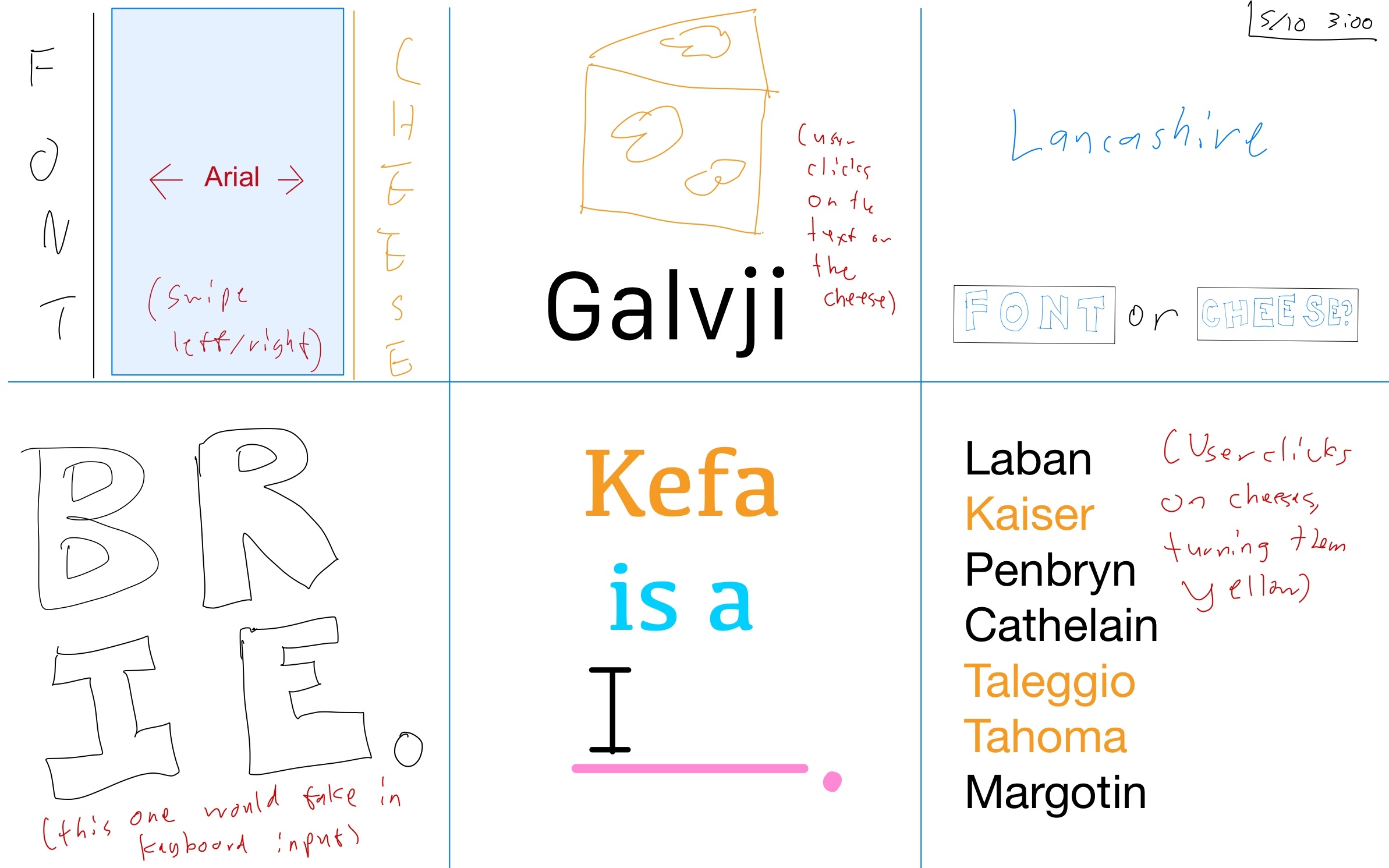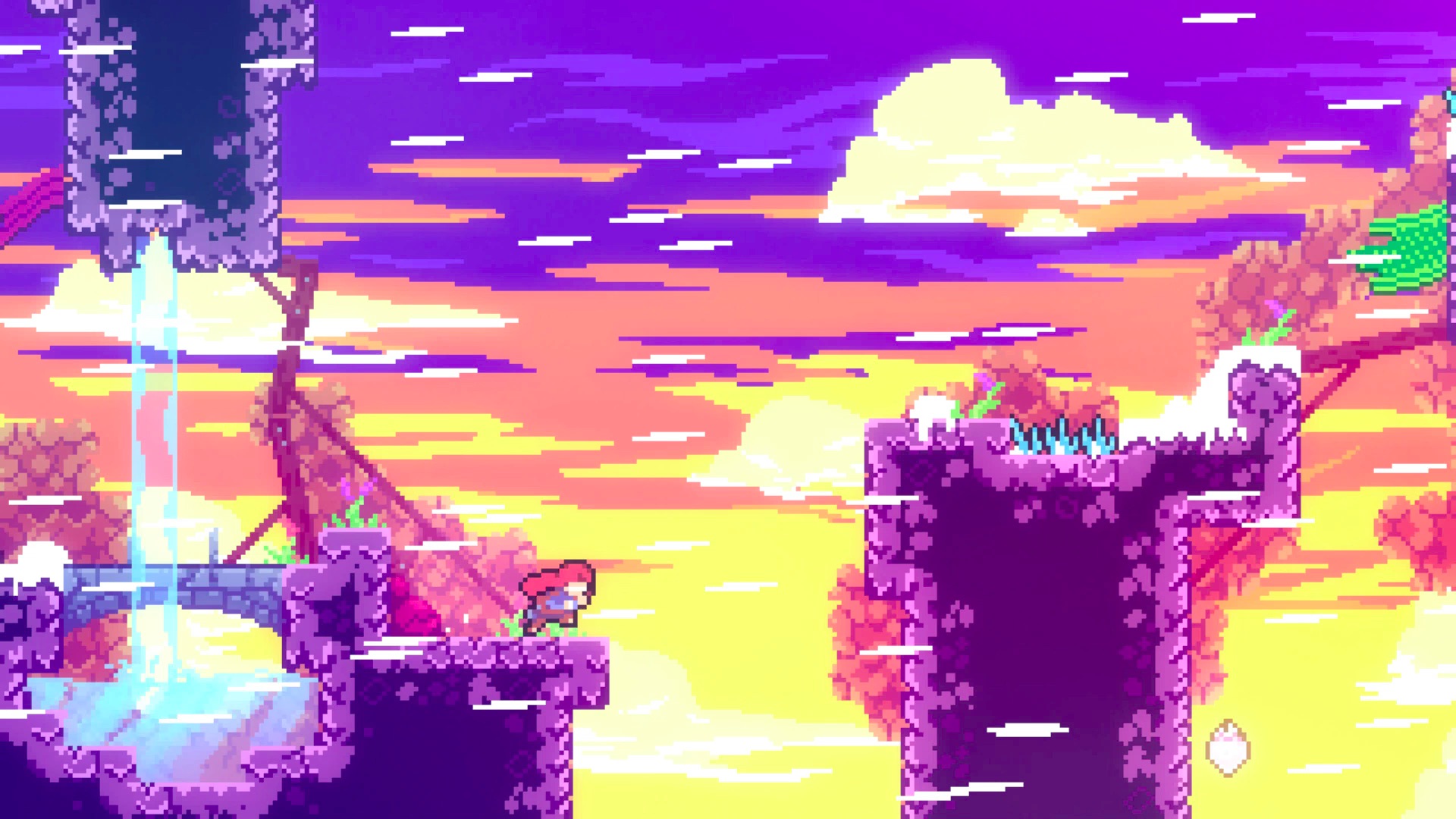
Core Elements:
- Cheese/font name
- Button/way to input guess, e.g. keyboard pressing, images to click on, etc.
Supportive Elements:
- Instructions/Info page (Cheese or font? Click the button!)
- Telling the player whether they were correct or not
Extraneous Elements:
- Timer
- Score
- Cheese Image
- Colors/Checks/Exes indicating whether a player was correct or not
Explanations:
I experimented with making multiple things huge, such as the cheese (top middle) or the name (bottom left). For the bottom left, I tried making the name fullscreen, and allowing the user to input their guess with the keyboard. I also experimented with alternative input methods in the top left, where I used a swiping motion rather than buttons, perhaps for a mobile version of the game. I also tried a two-color system where I accentuated the core elements with blue, while extraneous elements, like the timer and score, were in black (making them pop out less to the player).
I also played with proximity in multiple ways — in the top left, I choose to place font and cheese far apart, signifying that they were opposite sides and that the player had the power to pick which went where. On the other hand, in the top right, I kept extraneous elements together in the corner, and similarly kept core elements together in the bottom middle.

One game I think is beautiful is Celeste, a platforming game. One thing I think Celeste handles well is contrast — throughout a level, things that are useful to you will generally be one color, while things that can harm you (e.g. the blue spikes in the screenshot above) stick out like a sore thumb against the red background. You can see how the designers kept this in mind in the below level, where the setting is now completely different — rather than a bright sunset, we’re now in a dark cave. As a result, the spikes are now bright white, making it easy to see all the potential threats in the world. Not only does this add color contrast and a sense of danger to the world, but it also alleviates player frustration — they’re significantly less likely to die to an obstacle they thought was safe or didn’t realize was there.




